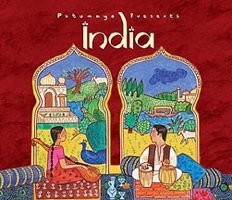As if in a subliminal note being sent to me, have run into wwo articles in the last 2 days that emphasize the importance of social interaction and human company in life. The second is specifically talking about friendship between women and though
I'm not one, the learnings about the need for friendships in getting through troubled times apply as much to men as to women, I think. The flight-and-fight vs. tend-and-befriend responses to stress need not be independent of each other.
1) This
piece by Dr. Atul Gawande in this month's New Yorker is more about solitary confinement & torture but it begins with a good introduction about the human need for social interaction.
Human beings are social creatures. We are social not just in the trivial sense that we like company, and not just in the obvious sense that we each depend on others. We are social in a more elemental way: simply to exist as a normal human being requires interaction with other people.
Children provide the clearest demonstration of this fact, although it was slow to be accepted. Well into the nineteen-fifties, psychologists were encouraging parents to give children less attention and affection, in order to encourage independence. Then Harry Harlow, a professor of psychology at the University of Wisconsin at Madison, produced a series of influential studies involving baby rhesus monkeys.
He happened upon the findings in the mid-fifties, when he decided to save money for his primate-research laboratory by breeding his own lab monkeys instead of importing them from India. Because he didn’t know how to raise infant monkeys, he cared for them the way hospitals of the era cared for human infants—in nurseries, with plenty of food, warm blankets, some toys, and in isolation from other infants to prevent the spread of infection. The monkeys grew up sturdy, disease-free, and larger than those from the wild. Yet they were also profoundly disturbed, given to staring blankly and rocking in place for long periods, circling their cages repetitively, and mutilating themselves.
At first, Harlow and his graduate students couldn’t figure out what the problem was. They considered factors such as diet, patterns of light exposure, even the antibiotics they used. Then, as Deborah Blum recounts in a fascinating biography of Harlow, “Love at Goon Park,” one of his researchers noticed how tightly the monkeys clung to their soft blankets. Harlow wondered whether what the monkeys were missing in their Isolettes was a mother. So, in an odd experiment, he gave them an artificial one.
In the studies, one artificial mother was a doll made of terry cloth; the other was made of wire. He placed a warming device inside the dolls to make them seem more comforting. The babies, Harlow discovered, largely ignored the wire mother. But they became deeply attached to the cloth mother. They caressed it. They slept curled up on it. They ran to it when frightened. They refused replacements: they wanted only “their” mother. If sharp spikes were made to randomly thrust out of the mother’s body when the rhesus babies held it, they waited patiently for the spikes to recede and returned to clutching it. No matter how tightly they clung to the surrogate mothers, however, the monkeys remained psychologically abnormal.
In a later study on the effect of total isolation from birth, the researchers found that the test monkeys, upon being released into a group of ordinary monkeys, “usually go into a state of emotional shock, characterized by . . . autistic self-clutching and rocking.” Harlow noted, “One of six monkeys isolated for three months refused to eat after release and died five days later.” After several weeks in the company of other monkeys, most of them adjusted—but not those who had been isolated for longer periods. “Twelve months of isolation almost obliterated the animals socially,” Harlow wrote. They became permanently withdrawn, and they lived as outcasts—regularly set upon, as if inviting abuse.
The research made Harlow famous (and infamous, too—revulsion at his work helped spur the animal-rights movement). Other psychologists produced evidence of similarly deep and sustained damage in neglected and orphaned children. Hospitals were made to open up their nurseries to parents. And it became widely accepted that children require nurturing human beings not just for food and protection but also for the normal functioning of their brains.
We have been hesitant to apply these lessons to adults. Adults, after all, are fully formed, independent beings, with internal strengths and knowledge to draw upon. We wouldn’t have anything like a child’s dependence on other people, right? Yet it seems that we do. We don’t have a lot of monkey experiments to call upon here. But mankind has produced tens of thousands of human ones, including in our prison system. And the picture that has emerged is profoundly unsettling.
Among our most benign experiments are those with people who voluntarily isolate themselves for extended periods. Long-distance solo sailors, for instance, commit themselves to months at sea. They face all manner of physical terrors: thrashing storms, fifty-foot waves, leaks, illness. Yet, for many, the single most overwhelming difficulty they report is the “soul-destroying loneliness,” as one sailor called it. Astronauts have to be screened for their ability to tolerate long stretches in tightly confined isolation, and they come to depend on radio and video communications for social contact.
The problem of isolation goes beyond ordinary loneliness, however.
2)
UCLA study on friendship among women - Tend and Befriend vs. Fight or Flight response to stress "Man is a social being. Expressed differently: The human being and all his capabilities and forms of expression are inseparably linked to the existence of others, just as he is linked to cosmic facts and to the demands of this earth." - Critical Considerations on the Meaning of Life, IZIP, Vol.III, 1924
And since true happiness is inseparable from the feeling of giving, it is clear that a social person is much closer to happiness than the isolated person striving for superiority. Individual Psychology has very clearly pointed out that everyone who is deeply unhappy, the neurotic and the desolate person stem from among those who were deprived in their younger years of being able to develop the feeling of community, the courage, the optimism, and the self-confidence that comes directly from the sense of belonging. This sense of belonging that cannot be denied anyone, against which there are no arguments, can only be won by being involved, by cooperating, and experiencing, and by being useful to others. Out of this emerges a lasting, genuine feeling of worthiness. " - Individual Psychology, Einführung in die neuere Psychologie, 1926
And so it goes....





